One of the most rewarding aspects of learning a new language is getting to know a whole new culture and cuisine! We have a saying in German: “Liebe geht durch den Magen.” – “The way to a (wo)man’s heart is through her/his stomach.” And the same probably goes for languages, too!
Today we’ll take a look at a couple of famous German cakes, their names and origins, so that next time, you’re in a German café, you can eat yourself through all of them and chalk it up to “German practice”. So, kick-start your espresso machines and get your pastry forks!
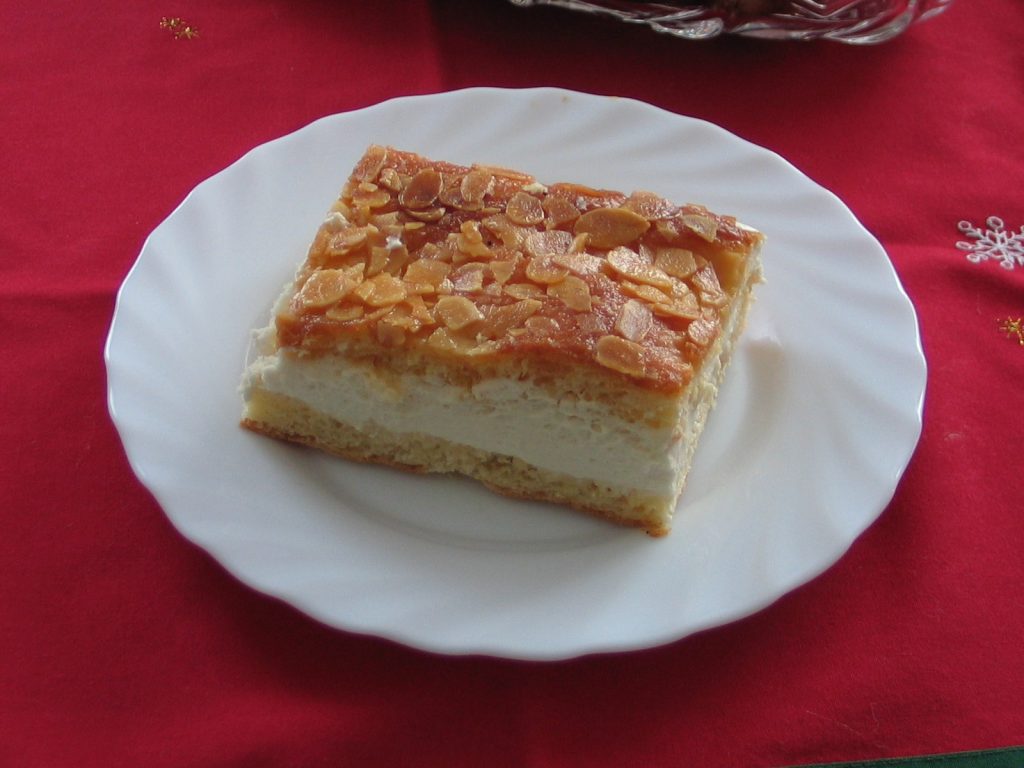
photo by Mufi69 via Wikimedia (CC BY-SA 2.0 de)
Der Bienenstich (“bee sting”)
Bienenstich, literally “bee sting” is a German yeast dough cake filled with vanilla custard (or cream) and caramelized almonds baked on top and filled with vanilla custard. But how did it get this strange name? Is it because bees love this cake so much they’ll sting you to get a bite?
The origin is unclear, but according to a legend, in the 15th century a group of German baker apprentices defended themselves against raiders from another village by throwing beehives at them! To celebrate their victory, the Bienenstich cake was baked.
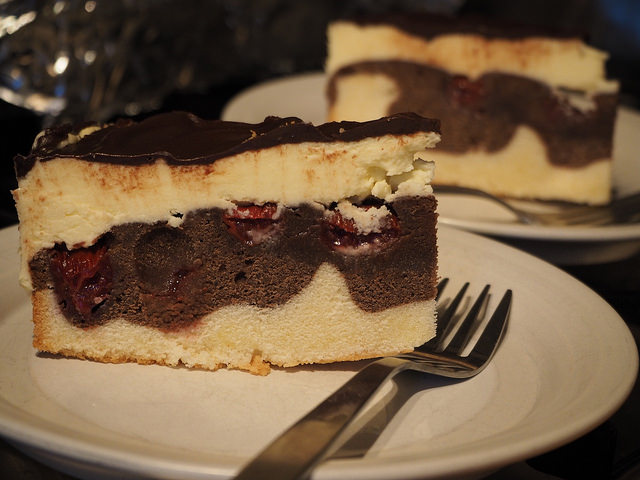
photo by Matt Lancashire via Flickr (CC BY-NC 2.0)
Die Donauwelle (“Danube Wave”)
Donauwelle, literally ‘Danube wave’, is a German/Austrian sheet cake combining layers of regular and chocolate pound cake with sour cherries. It’s topped with chocolate glaze and buttercream.
The name “Danube wave” comes fom the way the two layers of cake are forming a wavy border. Why Danube, though? It could be because of the popularity of this cake in the areas along this river, e.g. Vienna, Ulm, Ingolstadt, Regensburg, etc.
Another name for this cake is “Schneewittchentorte” (literally: snow white cake) because of the red, white and black color scheme.
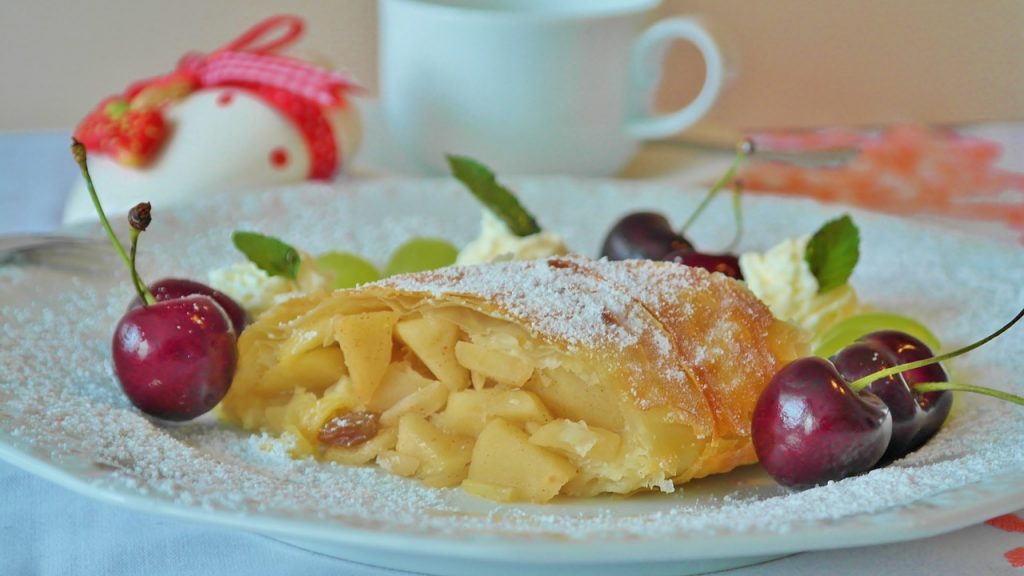
photo by Pixabay
Der Apfelstrudel (“apple swirl”)
Apfelstrudel, literally “apple swirl” is world-renowned, not least because of Rodgers & Hammerstein’s famous line in “My Favorite Things”. But what is it exactly?
Strudel is a form of layered pastry, usually with a sweet filling, such as apples or custard. It’s related to Near East pastries such as baklava, became popular in the Habsburg Empire around the 18th century and is still considered one of the trademark pastries of Vienna.
And yes, the German word “der Strudel” literally means: vortex, maelstrom, eddy, or whirlpool.
“Would you like some coffee with that apple vortex?”
The reason for this strange name is that originally Strudels were spiral-shaped. Through the centuries the shape slowly changed (today Strudels are mostly flat), but the name stuck.
Fun fact: in Hebrew, the @-sign is also called “Strudel”.
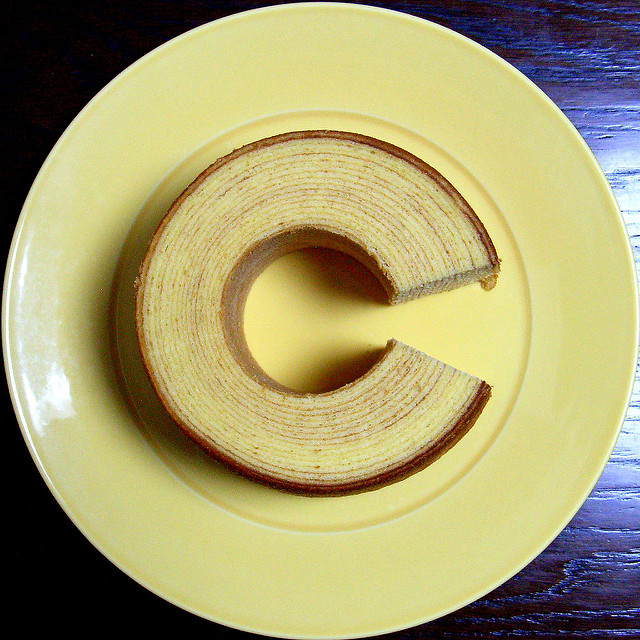
photo by Ishikawa Ken via Flickr (CC BY-SA 2.0)
Der Baumkuchen (“tree cake”)
A feast for beavers? Fortunately, Baumkuchen (“tree cake”) does not contain any traces of timber. It’s simply a German variety of spit cake, which is popular in many European countries. In Greece it’s called Obelisa, in Romania Agnethler, in Hungary Kürtőskalács.
The cake is made by brushing between 15-20 layers of batter onto a spit and roasting it. When sliced, the many thin layers of the cake resemble growth rings of trees, hence the name. Due to the time- and labor-intensive process of baking this cake, it’s considered a delicacy and often very expensive.
Curiously, in Japan, Baumkuchen (バウムクーヘン, Baumukūhen) is one of the most popular pastries ever and available in most supermarkets, despite its relatively high price.
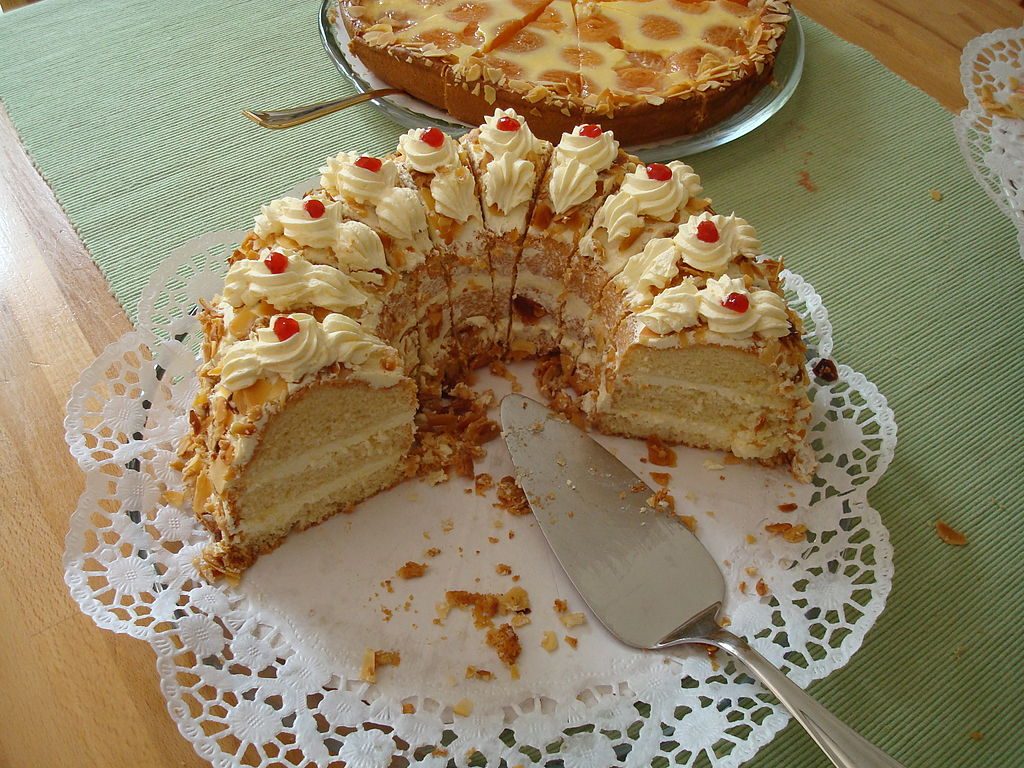
photo by Claus Ableiter via Wikimedia (CC BY-SA 3.0)
Der Frankfurter Kranz (Frankfurt Crown Cake)
The Frankfurter Kranz (literally “Frankfurt Crown Cake”) is a ring-shaped buttercream cake. It consists of multiple rings of sponge cake with buttercream in between. The exterior is coated with even more buttercream, caramel-covered brittle nuts (known as “Krokant”), cherries, toasted almond flakes or hazelnuts.
Why crown cake? Frankfurt used to be the city where Germans emperors were crowned. And the cake even looks a bit like a crown, with its ring shape, the golden Krokant and the ruby-red cherries on top.

photo by Pixabay
Die Schwarzwälder Kirschtorte (Black Forest Cherry Cake)
The Schwarzwälder Kirschtorte, literally: “Black Forest Cherry Tart”, is a famous German chocolate sponge cake with cherry filling. It consists of multiple layers of sponge cake, whipped cream, chocolate shavings and maraschino (or sour) cherries. Its top is sprinkled with Kirschwasser, literally: “cherry water”, a clear spirit made from sour cherries.
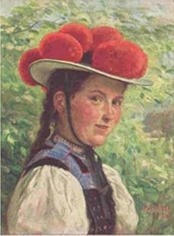
“Bollenhut”
There are a number of theories for the origin of this name:
- The coating of black chocolate shavings is reminiscent of a dark forest, such as the Black Forest.
- The Kirschwasser spirit, which is sprinkled on top, is mostly produced in the Black Forest area.
- Yet another theory states that the colors of the Black Forest cake are reminiscent of the traditional ethnic “Bollenhut” from the area.
What’s your favorite German cake?
–


